Chemicals are classified according to their hazards and are labelled with hazard symbols and plain-text warnings, with the inclusion of risk and safety (R and S) information.
Hazard Symbols
| Explosive, E
(Chemicals that explode) |
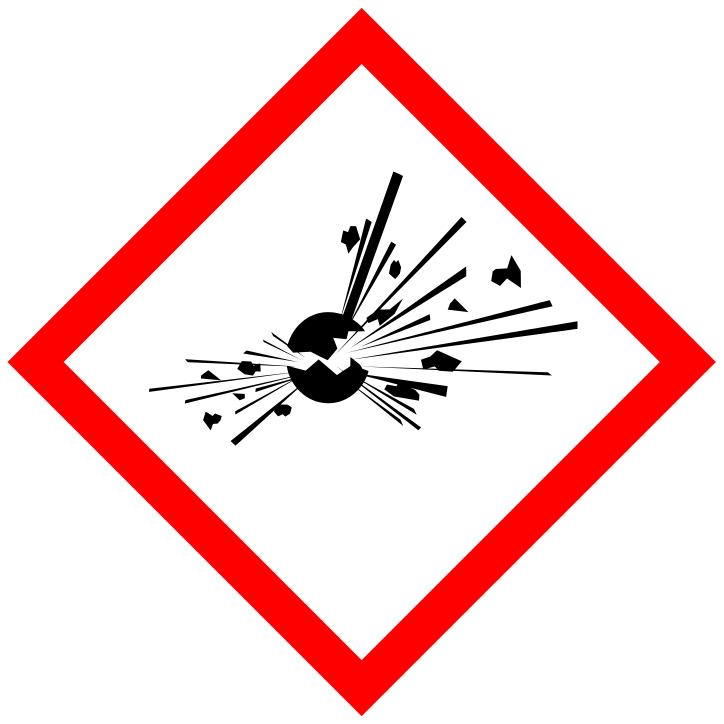 |
| Oxidising, O (Chemicals that react exothermally with other chemicals) |
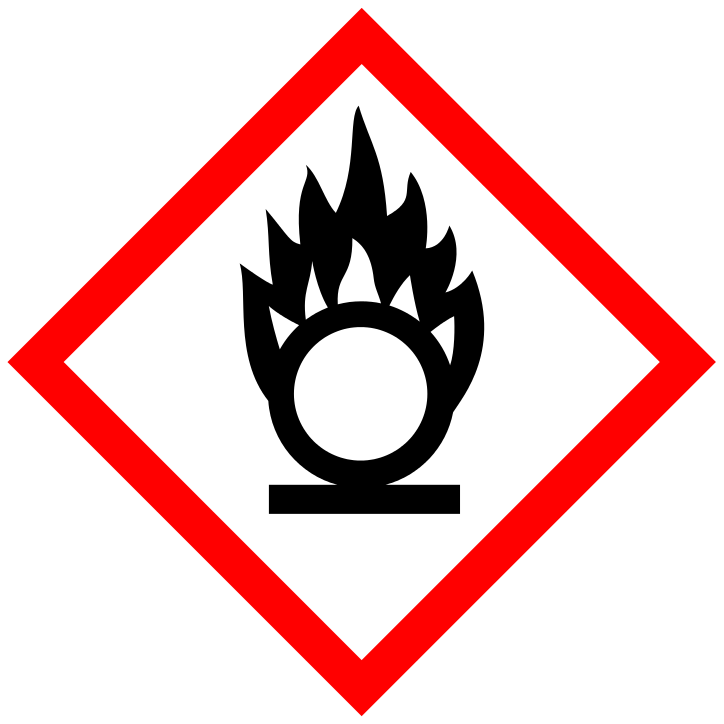 |
| Flammable, F
(Chemicals that have an extremely low flash point and boiling point, and gases that catch fire in contact with air OR chemicals that may catch fire in contact with air, only need brief contact with an ignition source, have a very low flash point or evolve highly flammable gases in contact with water.) • Flammable gases, aerosols, liquids, solids |
 |
| Acute toxicity
(Chemicals that at very low levels cause damage to health OR Chemicals that at low levels cause damage to health) |
 |
| Harmful
(Chemicals that may cause damage to health) |
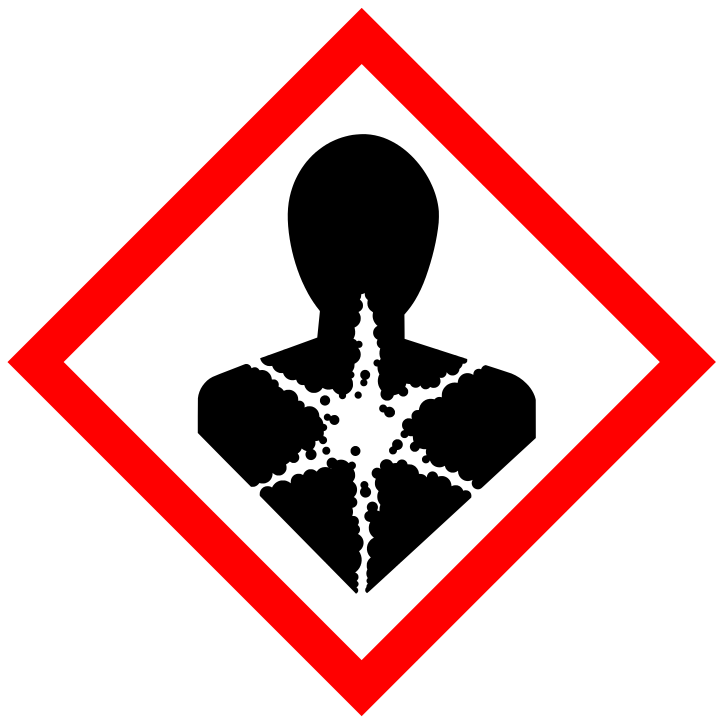 |
| Corrosive , C
(Chemicals that may destroy living tissue on contact) |
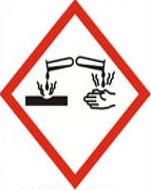 |
| Irritant
(Chemicals that may cause inflammation to the skin or other mucous membranes) |
 |
| Compressed gases Liquefied gases Refrigerated liquefied gases Dissolved gases |
 |
| Dangerous for the Environment
(Chemicals that may present an immediate or delayed danger to one or more components of the environment) |
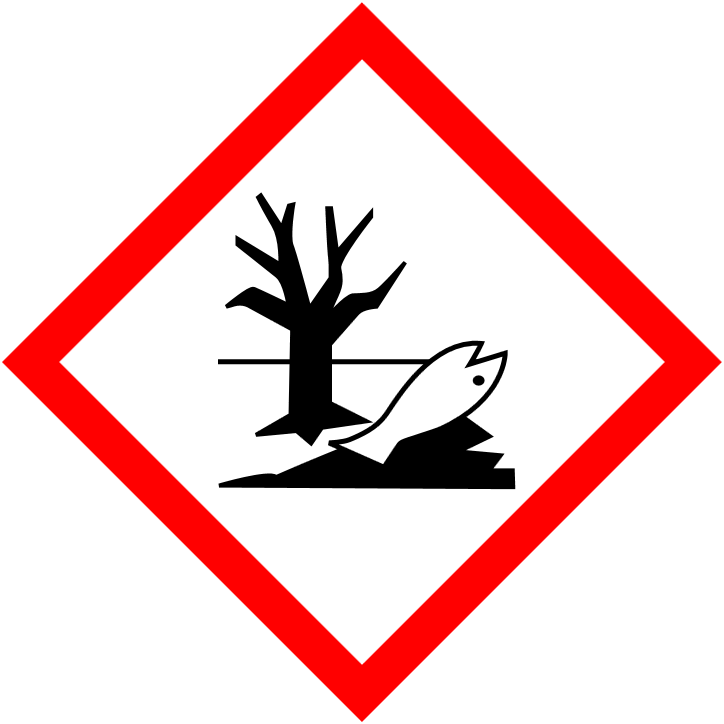 |
Risk and Safety Phrases
Information on hazards of chemicals
R1 Explosive when dry
R2 Risk of explosion by shock, friction, fire or other sources of ignition.
R10 Flammable
R11 Highly flammable
R12 Extremely flammable
R14 Reacts violently with water
R15 Contact with water liberates extremely flammable gases
R16 Explosive when mixed with oxidizing substances
R26 Very toxic by inhalation
R27 Very toxic in contact with skin
R30 Can become highly flammable in use
R31 Contact with acids liberates toxic gases
R32 Contact with acids liberates very toxic gases
Safety phrases (S)
Information on storage, usage and other precautionary measures.
S1 Keep locked up
S2 Keep out of reach of children
S3 Keep in a cool place
S6.1 Keep under nitrogen
S7 Keep container tightly closed
S8 Keep container dry
S9 Keep container in a well-ventilated place.
S37 Wear suitable gloves
S62 If swallowed, do not induce vomiting, seek medical advice immediately and show this container or label.
Labarotary Chemical Storage
Chemicals must be stored according to their storage class. Each chemical is allocated one storage class only; those with more than one hazard characteristic are allocated according to the ranking of their hazard characteristics. This ensures that in the case of chemicals with similar or identical hazard characteristics, the same safety measures can be taken, especially against fire and explosion. Liquids or solid substances as well as preparations and products that do not fulfil the criteria of classes 1-8 are characterized as being of classes 10-13. No further differentiation in class is made between classes 10, 11, 12 and 13 as these are all substance-orientated.
LGK Designation
| 1 | Explosion material |
| 2A | Compressed, liquefied, or pressure-dissolved gases |
| 2B | Pressurized gas packages (aerosol containers) |
| 3A | Flammable liquid materials (Flashpoint < 55 °C) |
| 3B | Flammable liquids |
| 4.1A | Flammable solid materials |
| 4.1B | Flammable solid materials |
| 4.2 | Spontaneously combustible materials |
| 4.3 | Materials that form flammable gases in contact with water |
| 5.1A | Oxidizing agents |
| 5.1B | Organic pesticides |
| 6.1A | Flammable toxic materials |
| 6.1B | Non-flammable toxic materials |
| 6.2 | Infectious materials |
| 7 | Radioactive materials |
| 8A | Flammable corrosive materials |
| 8B | Non-flammable corrosive materials |
| 10 | Flammable liquids if not LGK 3A or 3B |
| 11 | Flammable solids |
| 12 | Non-flammable liquids in non-flammable packages |
| 13 | Non-flammable solids in non-flammable packages |
Safe Practice in Chemical Storage
- Store all chemicals by their hazards class and not in their alphabetical order.
- Do not store chemicals in direct sunlight or near heat sources such as ovens
- Date chemicals when first opened. If a particular chemical can become unsafe or deteriorate while in storage, an expiration date should also be included
- Do not use the lab bench for permanent storage of chemicals.
- Inspect your chemicals routinely for any signs of deterioration and for integrity of the label.
- Do not store chemicals above eye levels. If the container breaks, the contents can fall onto the face and upper body
